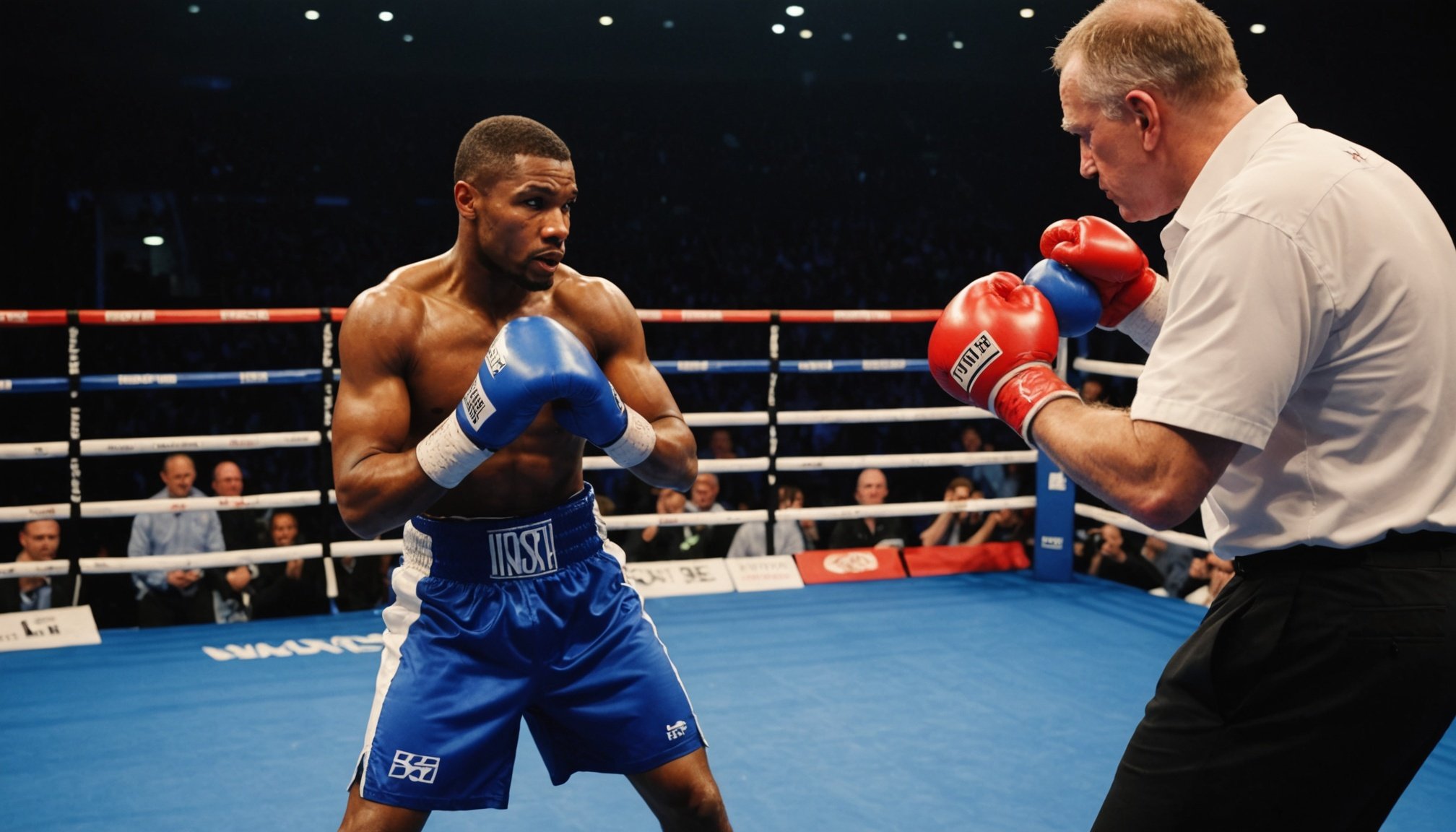Understanding Video Analysis in Boxing
In the realm of sports, video analysis in boxing serves as a transformative tool for both coaches and athletes. This technique involves the systematic study of recorded performances to enhance skill development and strategic understanding. Video analysis has proven to be indispensable in modern training regimens by providing clear, visual feedback that can pinpoint areas for improvement.
Historically, video analysis has gradually gained traction in boxing, evolving from rudimentary film study to sophisticated digital platforms. Initially used to simply replay bouts, technological advancements now allow for detailed examination of matches, offering insights into a boxer’s technique, movement patterns, and tactical decisions.
In the same genre : Mastering velocity: utilizing biomechanical insights to revolutionize fast bowling techniques in uk cricket coaching
For coaches, advanced coaching techniques are enriched by this method, as it enables them to craft tailored training strategies based on comprehensive performance reviews. They can assess an athlete’s strengths and weaknesses with precision, making adjustments to training plans in real-time.
Athletes benefit immensely from video analysis by gaining a deeper understanding of their own performances as well as their opponents’. It fosters a self-improvement mindset, encouraging athletes to reflect on their fights rigorously, reinforcing effective strategies, and altering counterproductive habits. Overall, the integration of video analysis in boxing is a testament to its role in continuously pushing the boundaries of athletic excellence.
Also to read : Unlocking performance potential: the ultimate technology blueprint for uk sports teams
Advanced Techniques for Video Analysis
In the realm of video analysis, technology is revolutionizing the way coaches and analysts dissect performance. Identifying key performance metrics through carefully reviewing footage allows trainers to tailor coaching strategies more effectively. By focusing on specific metrics like player positioning, reaction time, and overall technique captured on video, coaches can refine athletes’ skills.
One of the pivotal techniques in video analysis is the use of slow motion and frame-by-frame analysis. Slowing down footage enables the observation of minute details in an athlete’s movements or a play’s execution, highlighting areas for improvement that may not be apparent at full speed. Similarly, frame-by-frame analysis offers pinpoint precision in dissecting plays, allowing for in-depth examination of each component.
Moreover, analyzing opponent strategies via video footage is crucial for pre-game preparations. This examination provides insights into an opponent’s strengths, weaknesses, and habitual plays. Coaches can devise strategies that exploit these vulnerabilities, making real-time adjustments during competitions. For instance, understanding an opponent’s attack pattern allows defensive adjustments, potentially changing the game’s outcome.
Incorporating these sophisticated techniques ensures that both athletes and teams harness their full potential, offering a clear competitive advantage in today’s digital sports environment. These video analysis methods empower coaching strategies, fostering an environment of continuous improvement and tactical advancement.
Case Studies of Successful Video Analysis Applications
Video analysis technology has proven transformative for both professional and amateur boxers, driving significant performance improvements.
Professional Boxer Case Study
A top professional boxer integrated video analysis into his training regime, reviewing fights to identify weaknesses and optimize movements. Coaches leveraged analytics to refine tactics, leading to enhanced performance in critical matches. This approach not only improved physical technique but also fostered mental preparedness, crucial for success in the ring.
Amateur Training Program Case Study
An amateur training program utilized video analysis to hone skills and boost confidence among novices. By reviewing footage of sparring sessions, coaches could pinpoint areas requiring attention, offering personalized feedback. This method accelerated skill development, with participants showing marked improvements in agility and strategy comprehension. As a result, many trainees successfully transitioned to professional ranks.
UK Boxing Federation Collaboration
The UK Boxing Federation’s collaboration with video analysis firms marked a significant shift in training methodologies. Initiatives aimed at standardizing video usage in coaching allowed for better tracking of athlete progress and fostered a data-driven culture within the sport. By encouraging clubs to integrate technology, the federation amplified collective successes and championed innovative training practices, solidifying its prominence in the boxing world.
Practical Tips for Coaches Integrating Video Analysis
Integrating video analysis into coaching sessions can significantly enhance training effectiveness. To begin, understand the basic practical coaching tips for setting up video analysis. Select equipment that’s easy to use and suitable for your needs. Smartphones or tablets with high-resolution cameras can serve as excellent starting points. Position your recording device to capture a comprehensive view of the activity.
Let’s explore the training methods using video integration in detail. Establish a consistent routine; it’s advised to conduct video analysis sessions regularly—either weekly or bi-weekly—depending on your team’s schedule and competition level. Consider reviewing video footage pre-training to highlight areas of improvement, or post-training to reflect on performance and strategies.
Encourage coach-athlete dialogue through video feedback by involving athletes in the review process. This fosters understanding and allows athletes to visually digest information, ultimately aiding in self-evaluation and motivation. Ask direct questions like, “What do you notice about your technique here?” to nurture self-awareness.
To effectively integrate video analysis, maintain open communication channels, making feedback a two-way street. Understanding how to leverage video feedback can positively impact athlete development and bolster team dynamics significantly. By integrating these methods, coaches can create a more engaging and educational environment for their athletes.
Tools and Software for Video Analysis
In the ever-evolving world of boxing, leveraging video analysis tools can significantly enhance training and performance. Video analysis technology offers capabilities that help coaches and athletes meticulously study fight footage, refine techniques, and devise strategic plans.
Overview of Popular Video Analysis Software
Various video analysis tools are popular in boxing today. Software recommendations often highlight programs like Dartfish, Hudl Technique, and Coach’s Eye, each offering unique features tailored to boxing needs. Dartfish excels with its robust tagging features, allowing for a detailed breakdown of rounds. Hudl Technique provides slow-motion playback, beneficial for analyzing movements and reactions. Coach’s Eye is celebrated for its user-friendly interface, allowing quick edits and sharing feedback with athletes.
Comparing Free vs. Paid Tools
When choosing between free and paid tools, it’s important to weigh their functionalities. Free tools, like Kinovea, are appealing with their basic analysis features and cost-effectiveness. However, paid software tends to offer superior features such as cloud storage, enhanced analytics, and customer support. Investing in paid tools often results in greater precision and efficiency in video analysis.
Integrating Existing Training Technologies
Integrating video analysis with existing training technologies can amplify training outcomes. By combining wearable tech data with video insights, trainers create a comprehensive athletic profile, offering a nuanced understanding of an athlete’s performance dynamics. This synergy leads to optimized training regimes and improved performance metrics.
Addressing Challenges Faced by UK Boxing Coaches
The UK boxing landscape presents unique challenges for coaches. From navigating complex regulations to maintaining athlete morale amidst intense competition, coaches face an array of hurdles. A notable challenge is the deep-rooted resistance to incorporating new technologies into training programs. Some trainers stick to traditional methods, fearing that technology might change the sport’s essence or prove too costly. To overcome this, it’s crucial to highlight the tangible benefits of technology, such as data analytics to enhance performance tracking and injury prevention strategies.
Effective strategies are essential for overcoming hurdles and ensuring athletes are both trained and retained. Coaches can gain athlete buy-in by creating a balanced training regime that combines modern techniques with time-tested practices. A focus on personalized training plans can increase athlete engagement and commitment. Additionally, coaches should foster an inclusive team environment where athletes feel valued and supported.
Moreover, networking and professional development opportunities allow coaches to exchange ideas and solutions to common issues, enhancing their approach. They can leverage workshops and seminars which focus on challenges in boxing coaching to stay updated on best practices. By addressing these challenges head-on, UK boxing coaches can not only maintain competitiveness but also ensure the sustainable development of their athletes.
Expert Opinions and Interviews
Gaining perspectives from industry professionals can be invaluable. Through insightful interviews, various aspects of boxing training and performance are explored, offering expert insights and actionable advice.
Interview with a Veteran Boxing Coach
An interview with a seasoned boxing coach reveals the transformative power of video analysis in training. Video analysis allows for precise identification of performance flaws. This expert stresses the importance of breaking down footage to pinpoint weaknesses in technique or strategy, allowing for targeted improvements.
Insights from a Sports Performance Analyst
Performance analysts use advanced techniques to dissect athlete performance. The analyst emphasizes how video analysis fosters a data-driven approach, enhancing strategic planning. Through meticulous breakdowns of matches, analysts provide professional advice to adjust techniques and sharpen competitive edge.
Perspectives from Professional Boxers
Professional boxers share how video analysis directly impacts their preparation and results. By reviewing footage, athletes gain insights into their own techniques and those of opponents. Boxers reflect on improved reaction times, strategic adjustments, and increased confidence as a result of detailed analysis. They collectively agree on the strategic advantage gained through incorporating this analytical tool into their training regimen.











